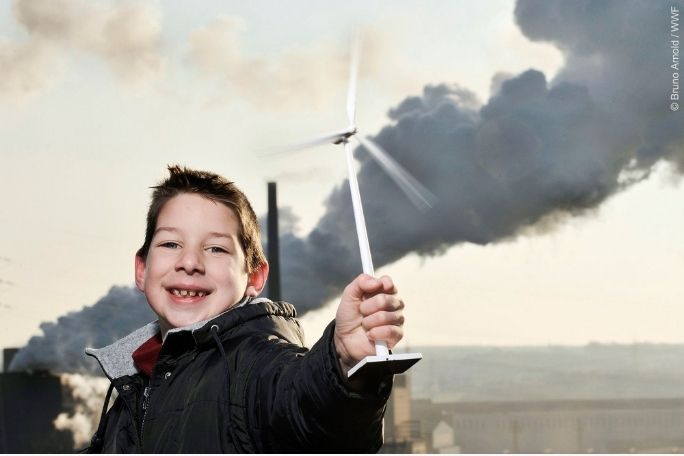Lesson summary
Students are asked to imagine themselves as the news makers of the future. They will work in groups or as a class to prepare a news piece from 10 years in the future that describes how they took action for climate change and the positive change this made after 10 years. Students are guided through the process of developing an idea, writing an article or script, creating additional materials (such as images) in support of their news piece, and sharing and receiving feedback on their news piece.
Essential questions:
- What actions can we do now to help limit climate change?
- How can we communicate messages about climate change action?
- What steps are involved in creating a news piece? How can we create a news piece to share messages about climate change action?
- What will the news of the future be? How can we be the future news makers?
Lesson guides and printables
Curriculum links
Select your curriculum from the options below.
Lesson details
Curriculum mapping
Australian curriculum content descriptions:
Year 5 English:
- Plan, rehearse and deliver presentations for defined audiences and purposes incorporating accurate and sequenced content and multimodal elements (ACELY1700)
- Plan, draft and publish imaginative, informative and persuasive print and multimodal texts, choosing text structures, language features, images and sound appropriate to purpose and audience (ACELY1704)
- Re-read and edit student’s own and others’ work using agreed criteria for text structures and language features (ACELY1705)
- Use a range of software including word processing programs with fluency to construct, edit and publish written text, and select, edit and place visual, print and audio elements (ACELY1707)
Year 6 English:
- Participate in and contribute to discussions, clarifying and interrogating ideas, developing and supporting arguments, sharing and evaluating information, experiences and opinions (ACELY1709)
- Use interaction skills, varying conventions of spoken interactions such as voice volume, tone, pitch and pace, according to group size, formality of interaction and needs and expertise of the audience (ACELY1816)
- Plan, draft and publish imaginative, informative and persuasive texts, choosing and experimenting with text structures, language features, images and digital resources appropriate to purpose and audience (ACELY1714)
- Re-read and edit students’ own and others’ work using agreed criteria and explaining editing choices (ACELY1715)
- Use a range of software, including word processing programs, learning new functions as required to create texts (ACELY1717)
Syllabus outcomes: EN3-1A, EN3-2A, EN3-1A.
General capabilities: Literacy, Critical and creative thinking, Personal and social capability.
Cross-curriculum priority: Sustainability OI.1, OI.6.
Relevant parts of Year 5 English achievement standards: Students create imaginative, informative and persuasive texts for different purposes and audiences. They contribute actively to class and group discussions, taking into account other perspectives. When writing, they demonstrate understanding of grammar using a variety of sentence types. They select specific vocabulary and use accurate spelling and punctuation. They edit their work for cohesive structure and meaning.
Relevant parts of Year 6 English achievement standards: Students understand how language features and language patterns can be used for emphasis, and they create detailed texts elaborating on key ideas for a range of purposes and audiences. They explain how their choices of language features and images are used. They contribute actively to class and group discussions. They demonstrate an understanding of grammar, and make considered vocabulary choices to enhance cohesion and structure in their writing. Students use accurate spelling and punctuation for clarity and make and explain editorial choices based on criteria.
Unit of work: Earth Hour – Primary.
Time required: 60+ mins (this lesson may be extended over several sessions)
Level of teacher scaffolding: High – oversee activity, lead students in creating news pieces.
Resources required
- Student Worksheet – one copy per student OR computers/tablets to access the online worksheet
- Device capable of presenting a website to the class
- Workbooks, pens/pencils
- How to be persuasive presentation
- Tips for writing a news article, Tips for creating a news report
- Inverted pyramid model of journalistic writing
- Assessment Rubric – Years 5 & 6
- Pledge poster
Skills
This lesson is designed to build students’ competencies in the following skills:
- Communication
- Community engagement
- Creativity
- Digital literacy
- Leadership
- Problem solving
- Social skills
Additional info
This lesson has been created in partnership with WWF-Australia. Earth Hour is the world’s largest community-driven climate change campaign. At the centre of Earth Hour is switching off lights to show a commitment to taking action.
Thousands of teachers use Earth Hour’s education program to enrich their curriculum and provide pathways for young people to create change in their world.
For the most up to date Earth Hour dates, times, and events, check here.


Welcome back!
Don't have an account yet?
Log in with:
Create your free Cool.org account.
Many of our resources are free, with an option to upgrade to Cool+ for premium content.
Already have an account?
Sign up with:
By signing up you accept Cool.org's Terms and Conditions(Opens in new tab) and Privacy Policy(Opens in new tab).